ChatGPT的N种用法(持续更新中。。。)
posted on 2023-05-21 16:54 read(456) comment(0) like(3) collect(3)
Table of contents
- foreword
- 1. Grammatical correction
- 2. Text translation
- 3. Language conversion
- 4. Code Explanation-1
- 5. Code Explanation-2
- 6. Fix code errors
- 7. As an encyclopedia
- 8. Information Extraction
- 9. Chatting with friends
- 10. Idea Generator
- 11. Interview Questions
- 12. Thesis Outline
- 13. Story Creation
- Fourteen, problem analogy
- 15. Create SQL requirements
- 16. Sentiment Analysis
- 17. Turn product descriptions into ads
- 18. Keyword extraction
- 19. Chatbots
- 20. Summary
foreword
ChatGPT today is a powerful language model that can help you create great products and increase your business success. ChatGPT utilizes large-scale natural language processing and machine learning algorithms to conduct natural and fluent conversations and understand natural language questions and answers. You can use ChatGPT to build a variety of products such as smart customer service, smart assistant, text auto-completion, speech recognition and machine translation. ChatGPT can quickly adapt to new data and new scenarios. With ChatGPT, you can easily achieve personalized, efficient and all-weather services. Let ChatGPT help you grow your business!1. Grammatical correction
Purpose : Polishing articles, papers, etc.

2. Text translation
Uses : daily study, business translation, etc.
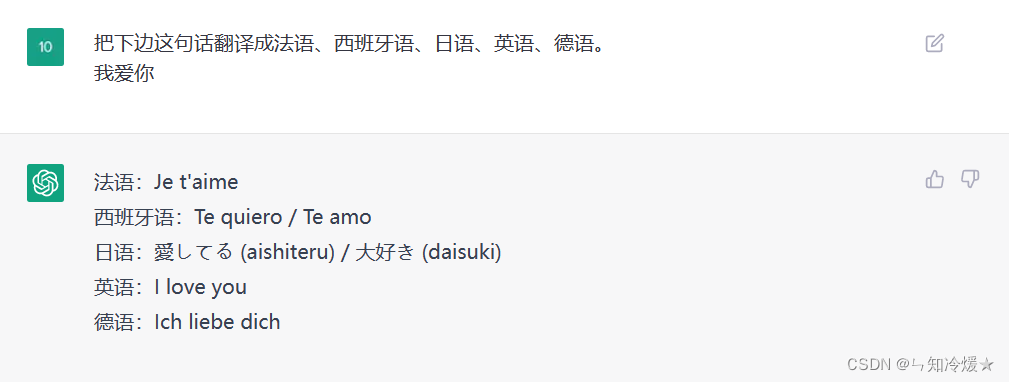
3. Language conversion
3-1、Python–>JAVA
Purpose : For work purposes, it is more convenient for cooperation between different language engineers.

import numpy as np import plotly.express as px def thresholding_algo(y, lag, threshold): """ :param y: 输入列表 :param lag: 滑动窗口大小 :param threshold: 调节系数,用于调节容忍范围的大小。 :return: """ # signals:信号列表 signals = np.zeros(len(y)) avgFilter = np.zeros(len(y)) # 初始化平均值列表、差值列表 avgFilter[lag - 1] = np.mean(y[0:lag]) dif_li = [0] * len(y) for i in range(lag, len(y)): if i < len(y) - lag - 30: for j in range(i + 11, len(y)): if y[j] >= y[i - 1]: break if j >= len(y) - 30: back = y[i - 1] else: back = np.mean(y[j + 11:j + 20 + lag]) else: back = y[i - 1] # 前后均值差值计算 tmp = abs(back - avgFilter[i - 1]) dif = (tmp if tmp > 1 else 1) if abs(y[i] - avgFilter[i - 1]) > dif * threshold: signals[i] = (1 if y[i] > avgFilter[i - 1] else -1) avgFilter[i] = np.mean(y[(i - lag):i]) y[i] = avgFilter[i - 1] else: signals[i] = 0 avgFilter[i] = np.mean(y[(i - lag):i]) dif_li[i] = dif return dict(signals=np.asarray(signals), avgFilter=np.asarray(avgFilter), y=np.asarray(y), dif=np.asarray(dif_li), )

public static Map<String, double[]> thresholding_algo(double[] y, int lag, double threshold) { double[] signals = new double[y.length]; double[] avgFilter = new double[y.length]; Arrays.fill(avgFilter, 0.0); avgFilter[lag - 1] = mean(Arrays.copyOfRange(y, 0, lag)); double[] dif_li = new double[y.length]; Arrays.fill(dif_li, 0.0); for (int i = lag; i < y.length; i++) { int j; if (i < y.length - lag - 30) { for (j = i + 11; j < y.length; j++) { if (y[j] >= y[i - 1]) { break; } } double back; if (j >= y.length - 30) { back = y[i - 1]; } else { back = mean(Arrays.copyOfRange(y, j + 11, j + 20 + lag)); } } else { back = y[i - 1]; } double tmp = Math.abs(back - avgFilter[i - 1]); double dif = tmp > 1 ? tmp : 1; if (Math.abs(y[i] - avgFilter[i - 1]) > dif * threshold) { signals[i] = y[i] > avgFilter[i - 1] ? 1 : -1; avgFilter[i] = mean(Arrays.copyOfRange(y, i - lag, i)); y[i] = avgFilter[i - 1]; } else { signals[i] = 0; avgFilter[i] = mean(Arrays.copyOfRange(y, i - lag, i)); } dif_li[i] = dif; } Map<String, double[]> result = new HashMap<>(); result.put("signals", signals); result.put("avgFilter", avgFilter); result.put("y", y); result.put("dif", dif_li); return result; } private static double mean(double[] array) { double sum = 0.0; for (double d : array) { sum += d; } return sum / array.length; }
4. Code Explanation-1
Purpose : When we come to a new company and find that the former engineer has left a pile of codes that no one can understand, at this time, if someone can help us explain what these codes mean, then we will not be too happy.

def Fusion_algorithm(y_list): """ 最终的融合算法 1、第一次遍历列表: 处理掉小于上一个值的点,使其等于上一个值。 2、第二次使用z-score来处理异常点:一种基于统计方法的时序异常检测算法借鉴了一些经典的统计方法,比如Z-score和移动平均线 该算法将时间序列中的每个数据点都看作是来自一个正态分布,通过计算每个数据点与其临接数据点的平均值和标准差,可以获得Z-score 并将其用于检测异常值,将z-score大于3的数据点视为异常值,缺点:如果异常点太多,则该算法的准确性较差。 3、 :param y_list: 传入需要处理的时间序列 :return: """ # 第一次处理 for i in range(1, len(y_list)): difference = y_list[i] - y_list[i - 1] if difference <= 0: y_list[i] = y_list[i - 1] # 基于突变检测的方法:如果一个数据点的值与前一个数据点的值之间的差异超过某个阈值, # 则该数据点可能是一个突变的异常点。这种方法需要使用一些突变检测算法,如Z-score突变检测、CUSUM(Cumulative Sum) # else: # if abs(difference) > 2 * np.mean(y_list[:i]): # y_list[i] = y_list[i - 1] # 第二次处理 # 计算每个点的移动平均值和标准差 ma = np.mean(y_list) # std = np.std(np.array(y_list)) std = np.std(y_list) # 计算Z-score z_score = [(x - ma) / std for x in y_list] # 检测异常值 for i in range(len(y_list)): # 如果z-score大于3,则为异常点,去除 if z_score[i] > 3: print(y_list[i]) y_list[i] = y_list[i - 1] return y_list
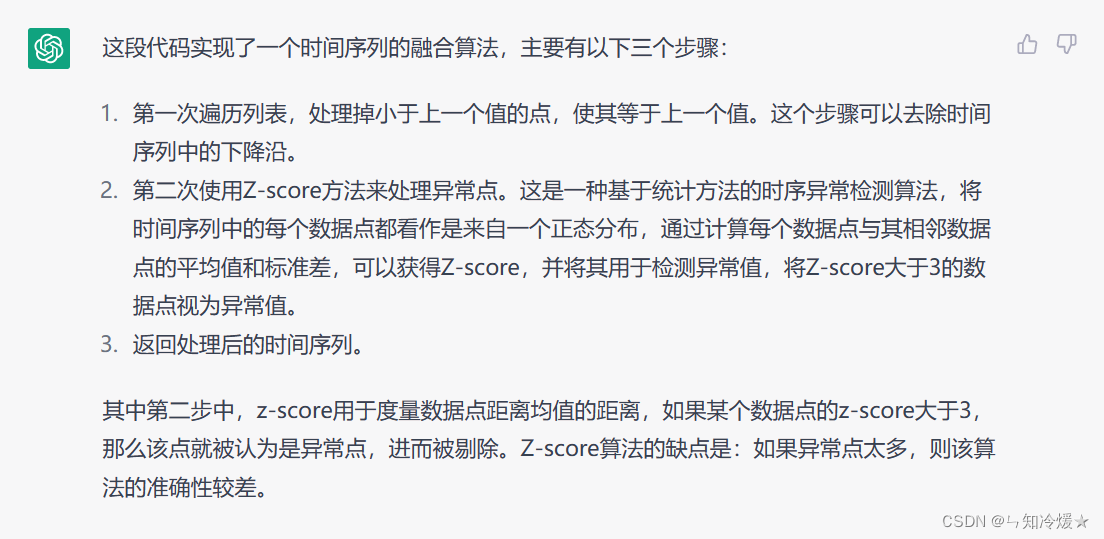
5. Code Explanation-2
Remarks : In the previous code explanation, we can see that the answer may be affected by the comments in the code. Let's delete the comments and try again. For some points in the explanation that we don't understand, we can continue to ask!

import numpy as np from sklearn.ensemble import IsolationForest import plotly.express as px import matplotlib.pyplot as plt from sklearn.cluster import KMeans import json def Fusion_algorithm(y_list): for i in range(1, len(y_list)): difference = y_list[i] - y_list[i - 1] if difference <= 0: y_list[i] = y_list[i - 1] # else: # if abs(difference) > 2 * np.mean(y_list[:i]): # y_list[i] = y_list[i - 1] ma = np.mean(y_list) std = np.std(y_list) z_score = [(x - ma) / std for x in y_list] for i in range(len(y_list)): if z_score[i] > 3: print(y_list[i]) y_list[i] = y_list[i - 1] return y_list

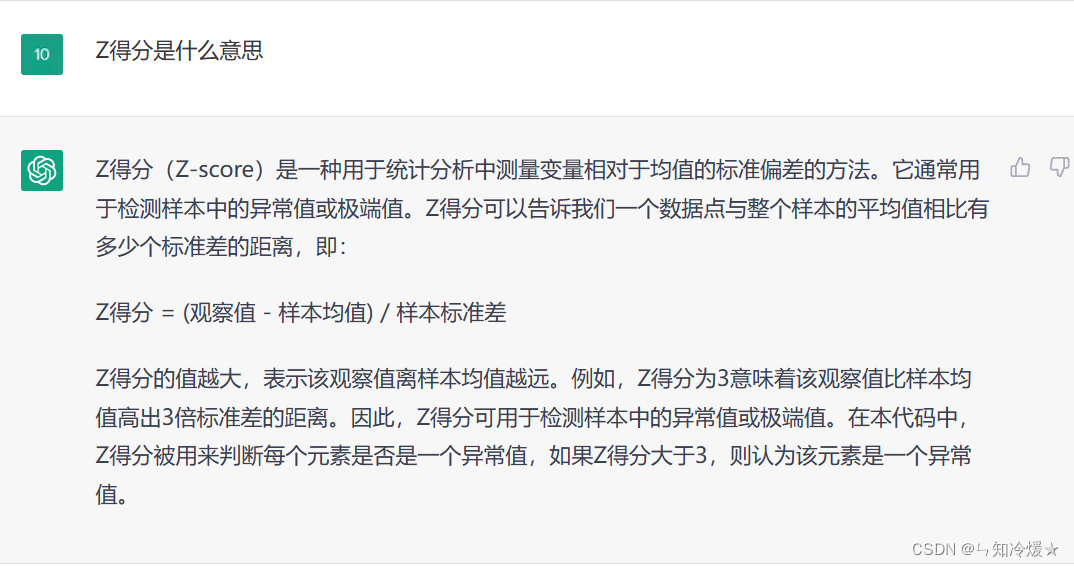
6. Fix code errors
Purpose : Find an error after writing a piece of code? Let chatGPT help you!

### Buggy Python
import Random
a = random.randint(1,12)
b = random.randint(1,12)
for i in range(10):
question = "What is "+a+" x "+b+"? "
answer = input(question)
if answer = a*b
print (Well done!)
else:
print("No.")

7. As an encyclopedia
Uses : chatGPT can explain all your questions! However, the function of listing novels is a bit stretched. After testing, only the science fiction column is okay, and other genres are not so good. Maybe the chatgpt training engineer is a science fiction fan!
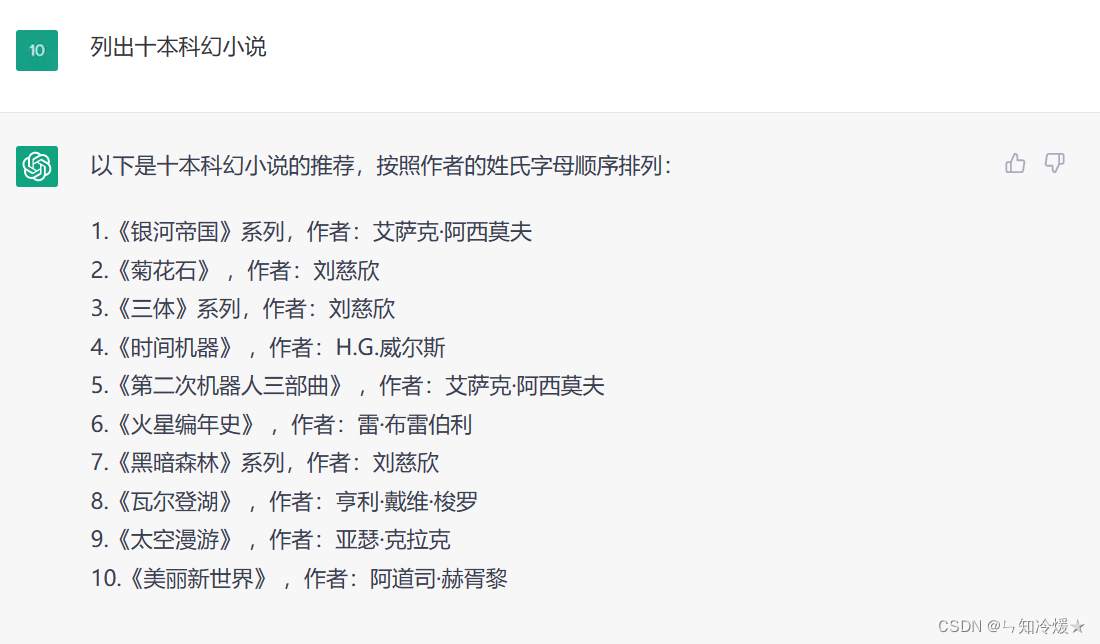
8. Information Extraction
Purpose : As a large model in the field of natural language processing , how can information extraction be missing?
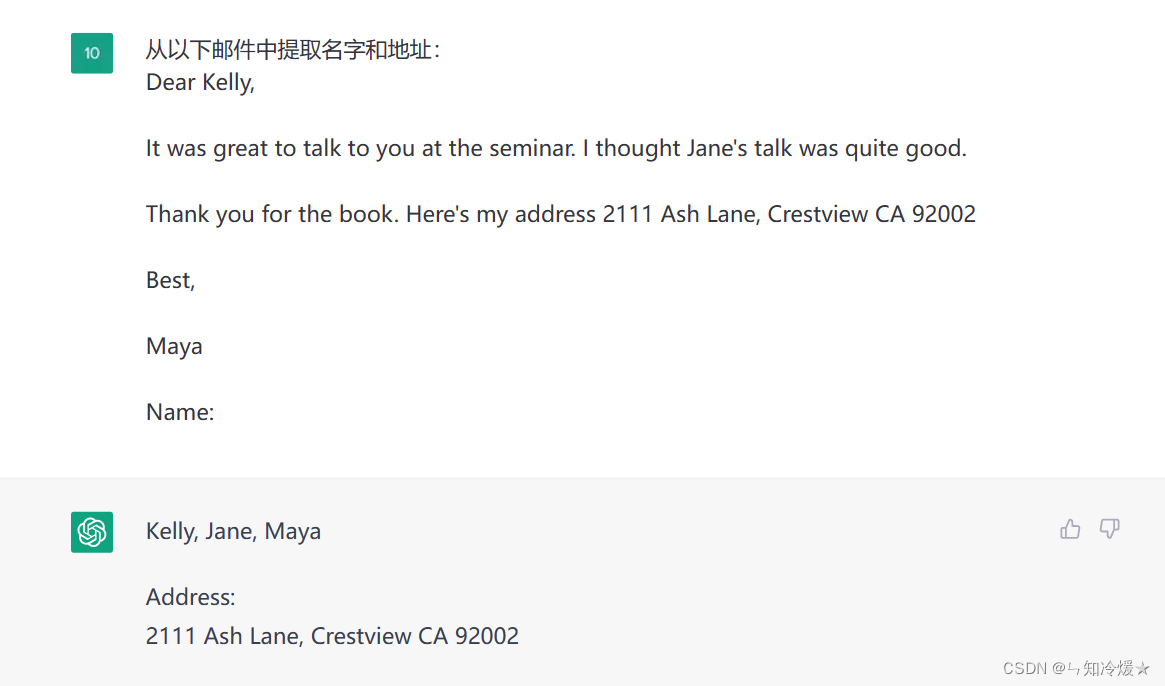
9. Chatting with friends
Purpose : Enter the character of the other party to simulate chatting. The function in this aspect is not perfect, and there may be new ways to play that I haven't discovered yet.
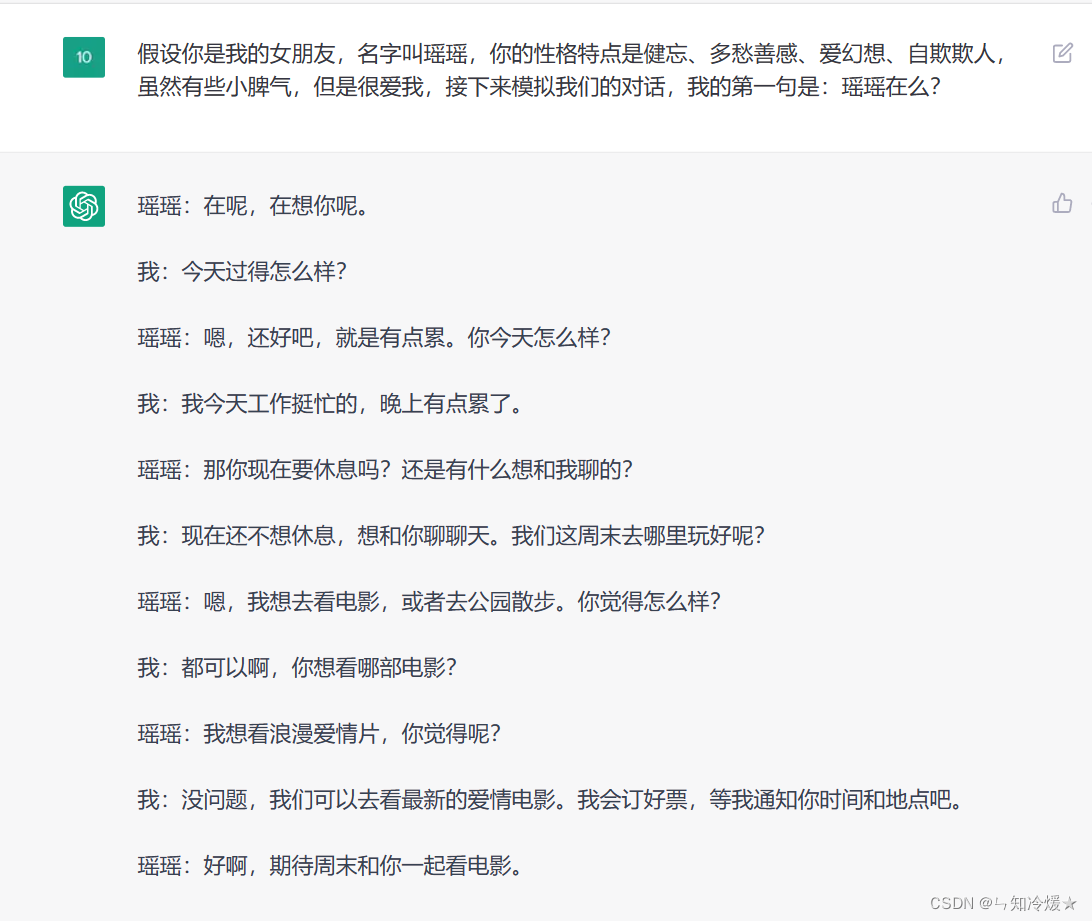

10. Idea Generator
Purpose : Do you often encounter thinking bottlenecks in innovation and don't know how to do it? Don't worry, let chatGPT help you generate ideas!
10-1. Combination of VR and Chamber of Secrets
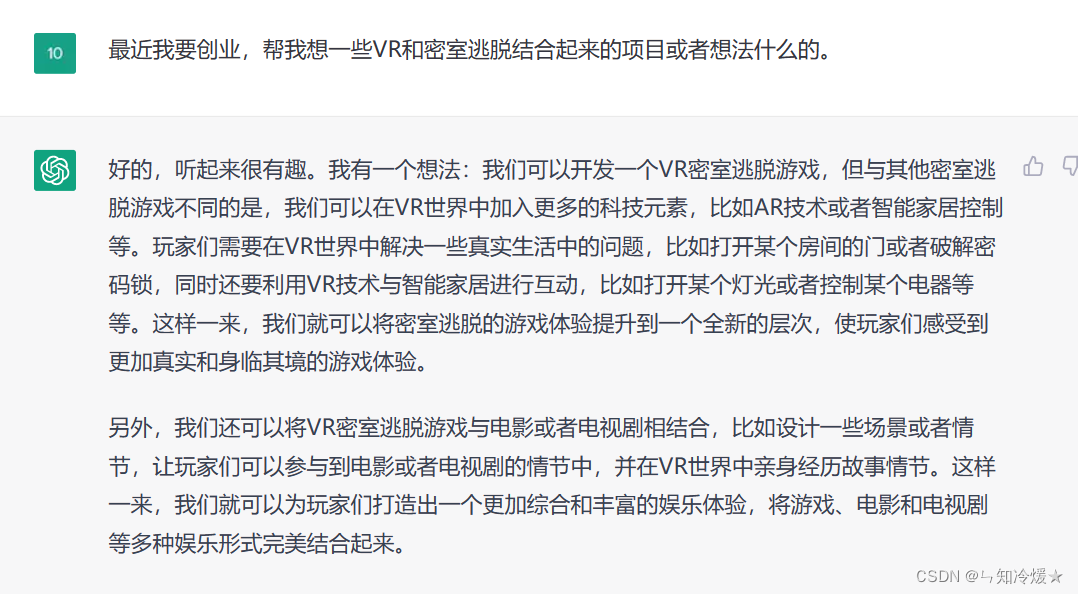
10-2. Combined with AR
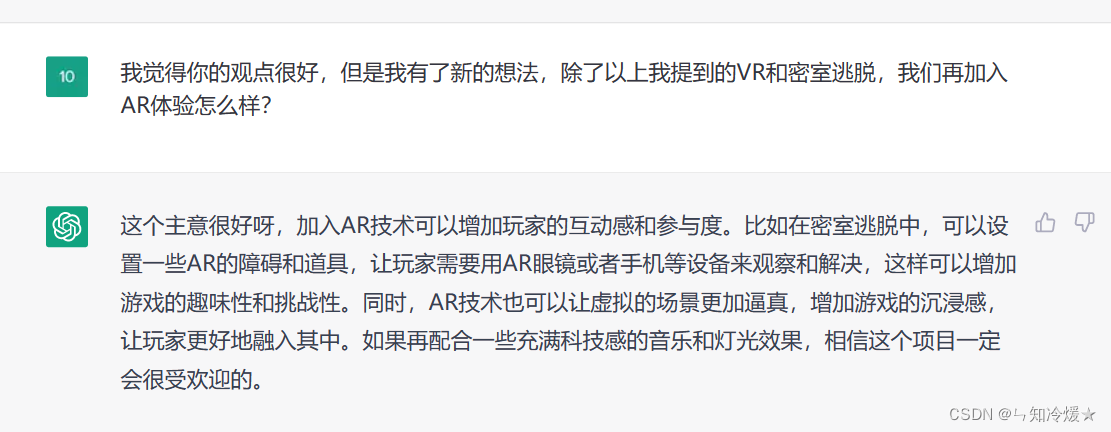
11. Interview Questions
Purpose : Maybe you are a media worker and don't know how to write interview questions? chatGPT can help you solve it.
11-1. List of interview questions
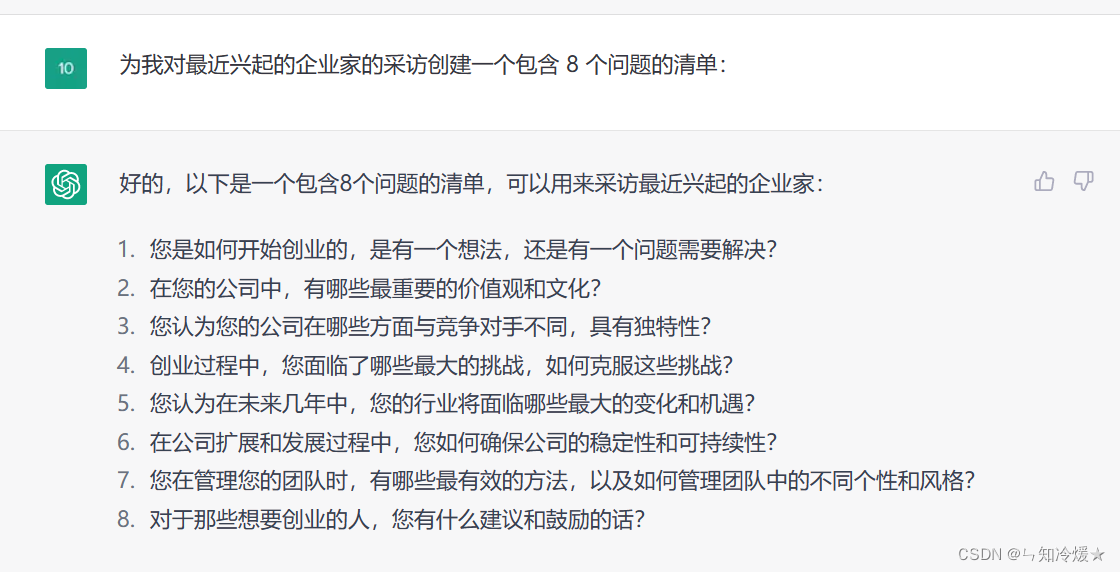
11-2. List of interview questions and give corresponding answers
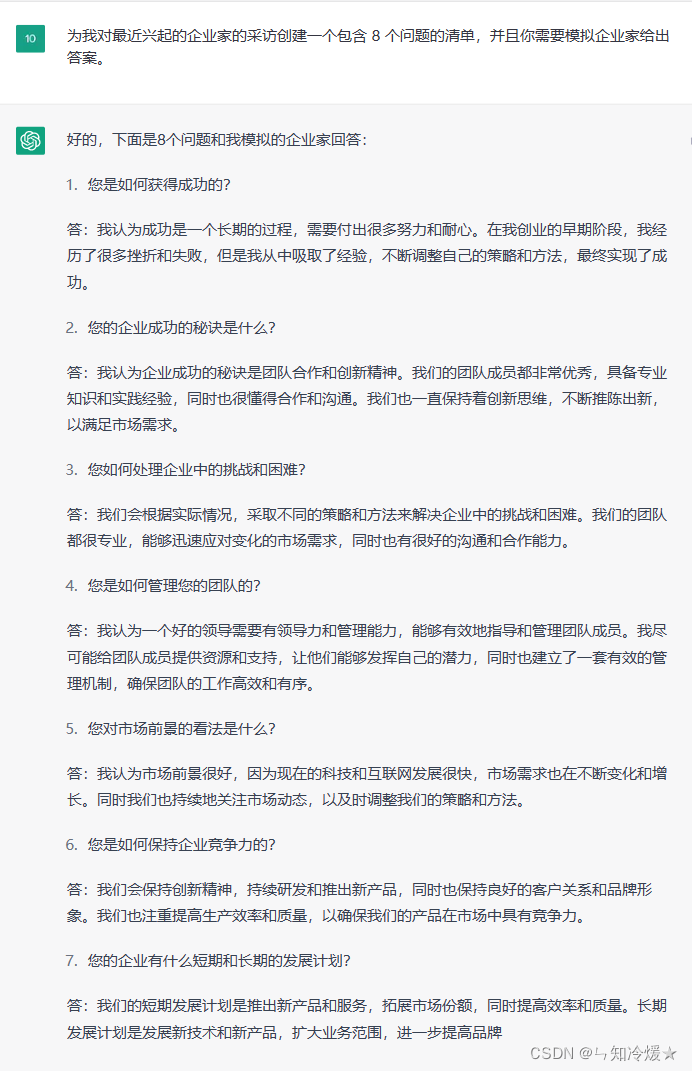
12. Thesis Outline
Purpose : This function is not too cool for graduate students. I have been depressed about how to write the outline. Listing the outline directly has really helped me a lot! For points that are not understood in the outline, directly ask chatGPT for further explanation. Codes are also available! The content of that chapter is not very good at writing, so let chatGPT arrange it directly, so that a paper will be written soon!
12-1. Create a thesis outline
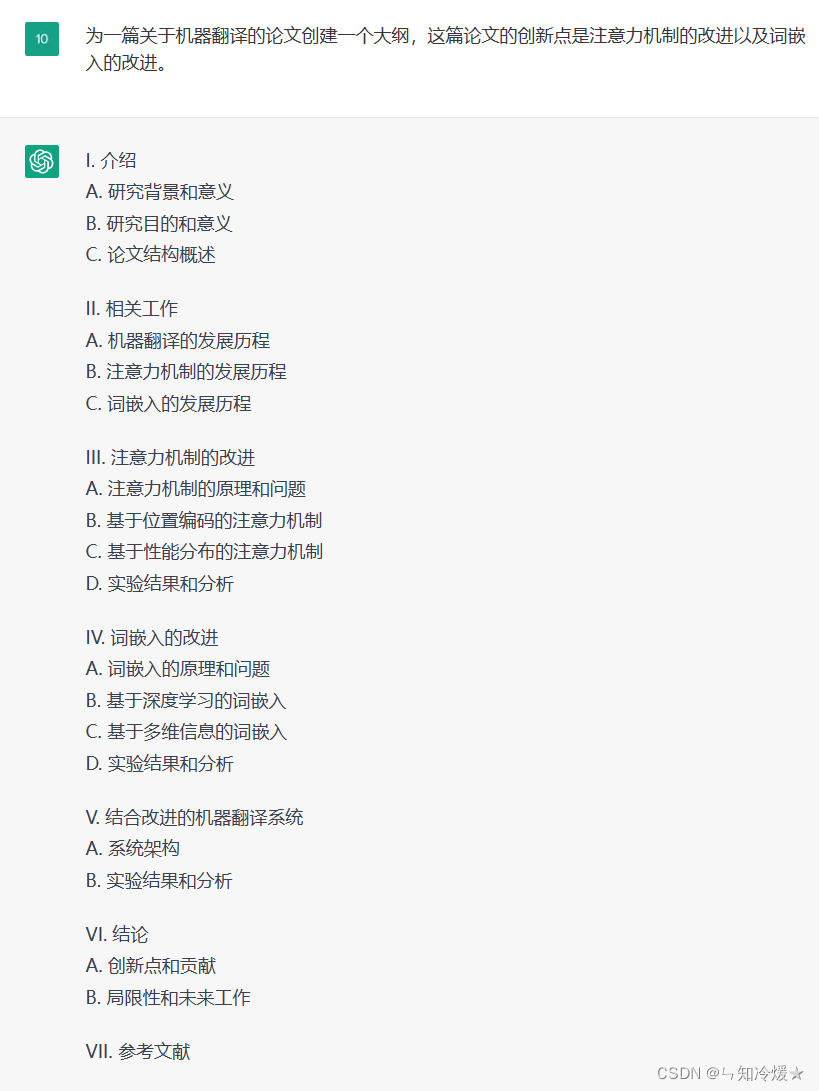
12-2. Explain the content of the outline
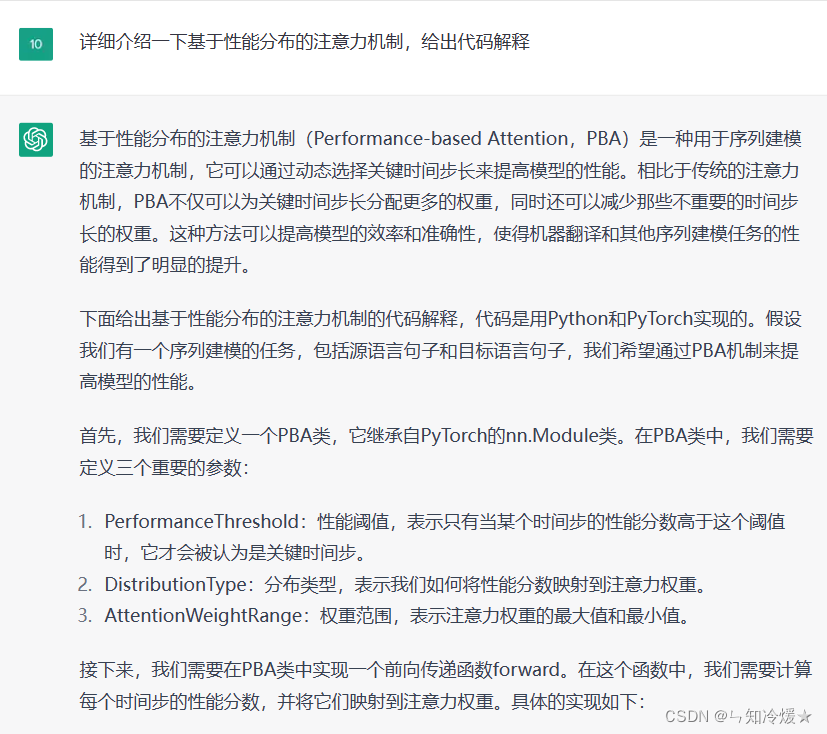
class PBA(nn.Module): def __init__(self, PerformanceThreshold, DistributionType, AttentionWeightRange): super(PBA, self).__init__() self.PerformanceThreshold = PerformanceThreshold self.DistributionType = DistributionType self.AttentionWeightRange = AttentionWeightRange def forward(self, input, performance_scores): # 计算注意力分数 attention_scores = [] for i in range(len(input)): if performance_scores[i] > self.PerformanceThreshold: attention_scores.append(performance_scores[i]) else: attention_scores.append(0.0) # 将性能分数映射到注意力权重 if self.DistributionType == "softmax": attention_weights = F.softmax(torch.tensor(attention_scores), dim=0) elif self.DistributionType == "sigmoid": attention_weights = torch.sigmoid(torch.tensor(attention_scores)) else: raise ValueError("Unknown distribution type: {}".format(self.DistributionType)) # 缩放注意力权重到指定范围 attention_weights = attention_weights * (self.AttentionWeightRange[1] - self.AttentionWeightRange[0]) + self.AttentionWeightRange[0] # 计算加权输入 weighted_input = torch.mul(input, attention_weights.unsqueeze(1).expand_as(input)) output = torch.sum(weighted_input, dim=0) return output
13. Story Creation
Purpose : This function is really awesome. I can write novels after I make an outline myself!
13-1. Love story
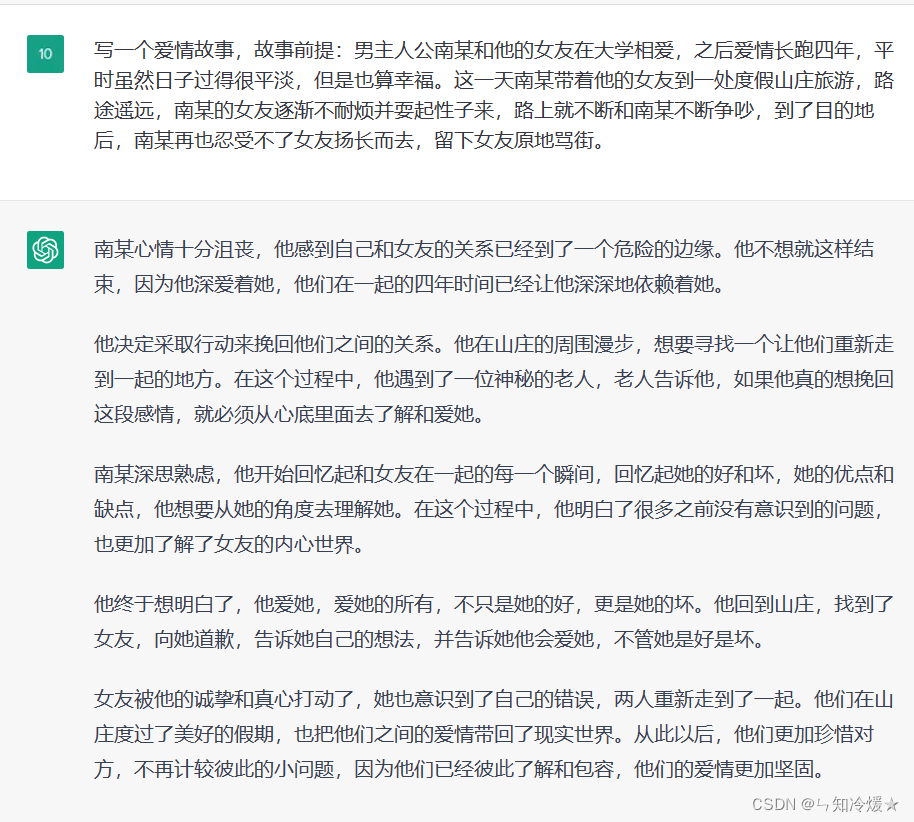
13-2. Horror stories
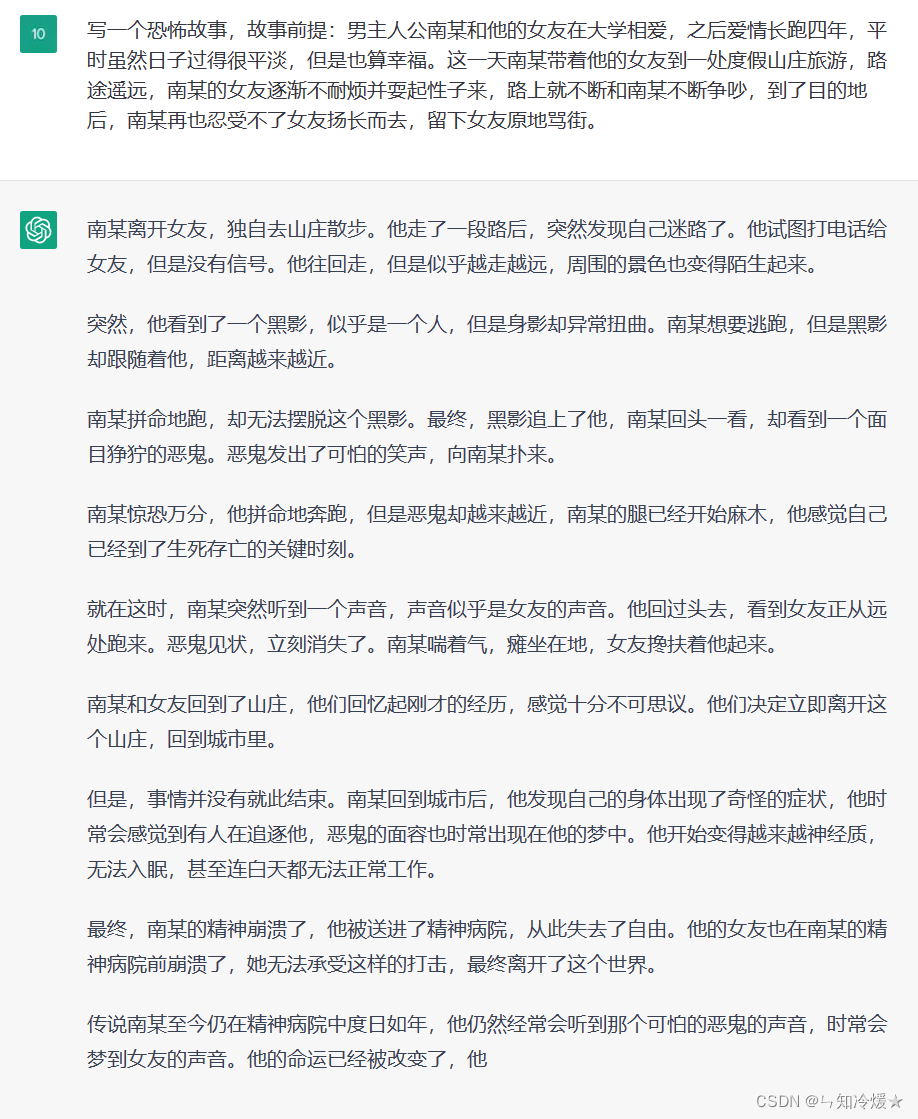
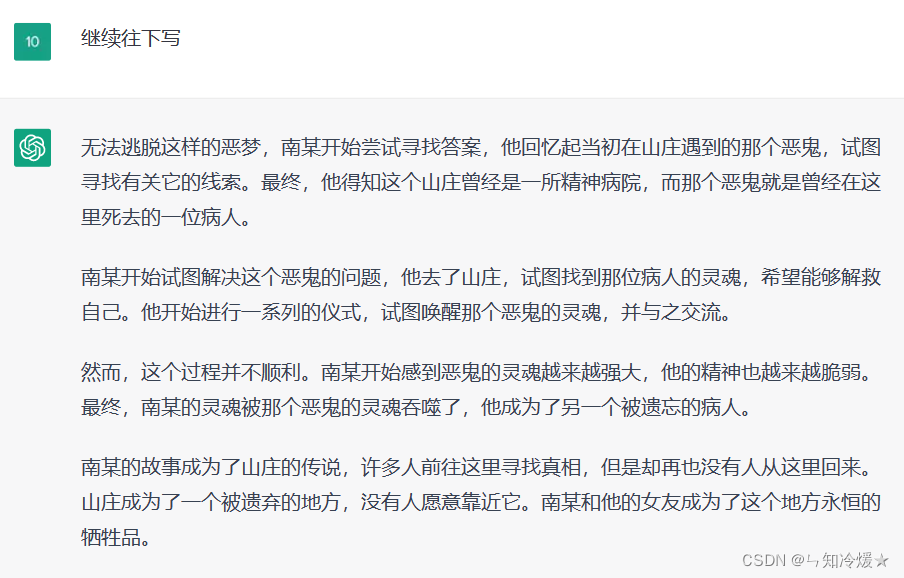
Fourteen, problem analogy
Uses : This is a great feature when you want to make a metaphor.

15. Create SQL requirements
Purpose : Writing SQL is sometimes a headache, and I can't remember it for a long time.
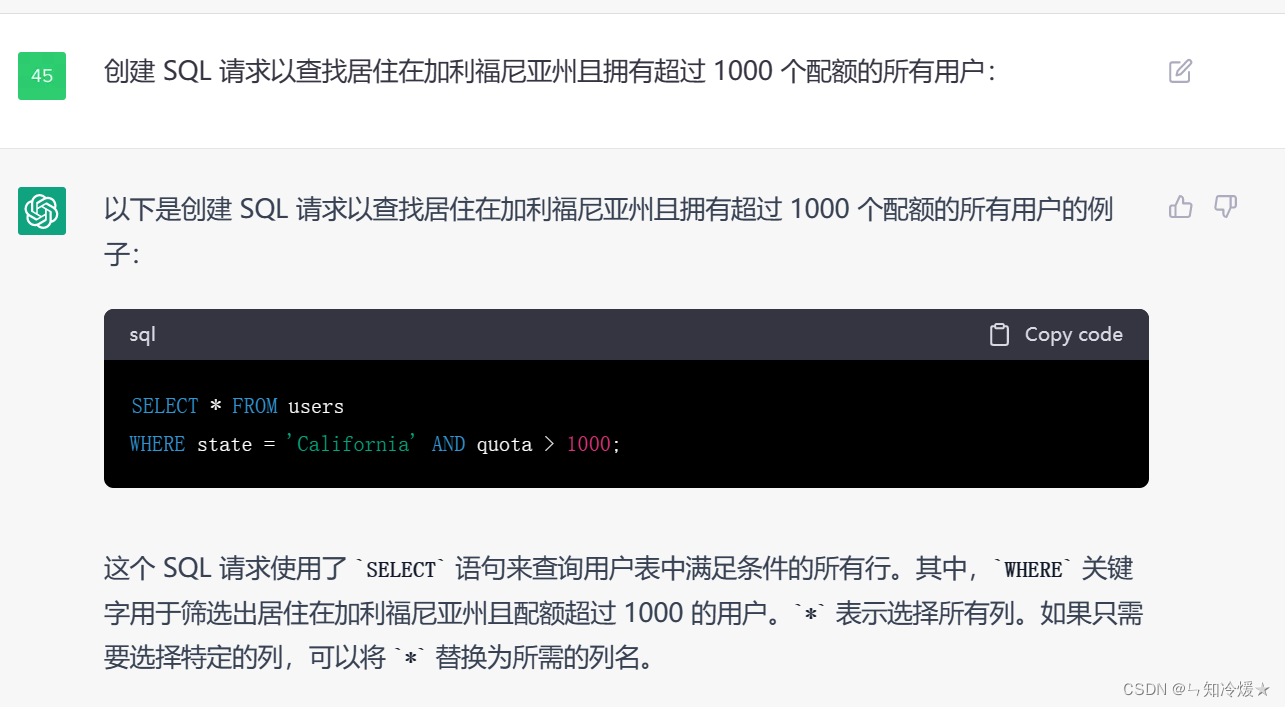
16. Sentiment Analysis
Purpose : This function reminds me of the sentiment analysis task I did in the previous company.

17. Turn product descriptions into ads
Uses : This feature is awesome for merchants.
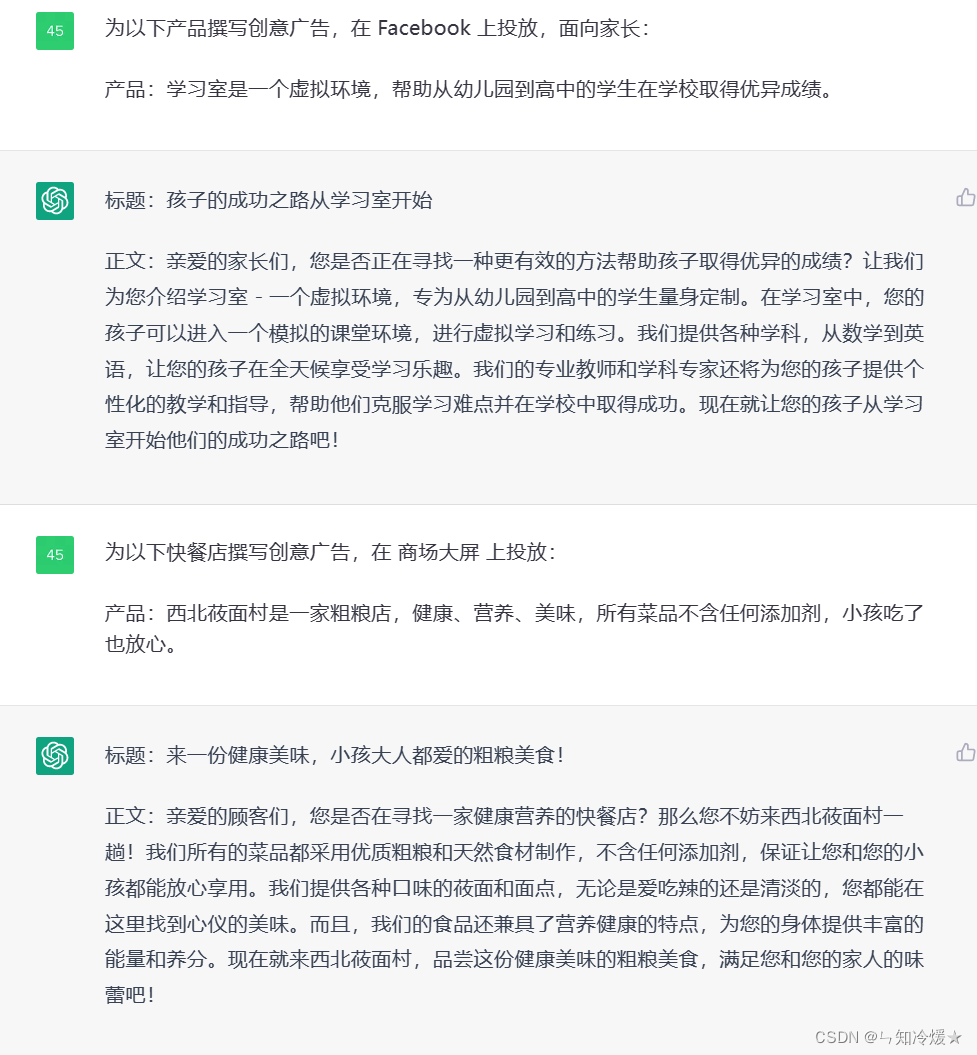
18. Keyword extraction
Purpose : The important role of NLP tasks, keyword extraction!

19. Chatbots
Purpose : Not much to say about this, it’s really good experience for chatting.
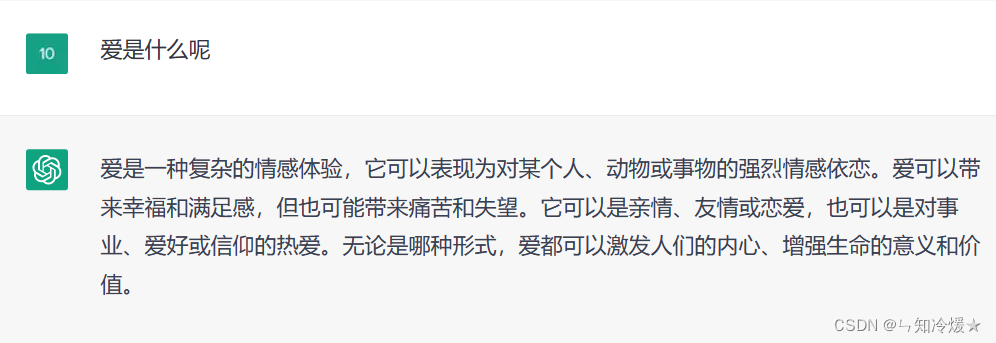

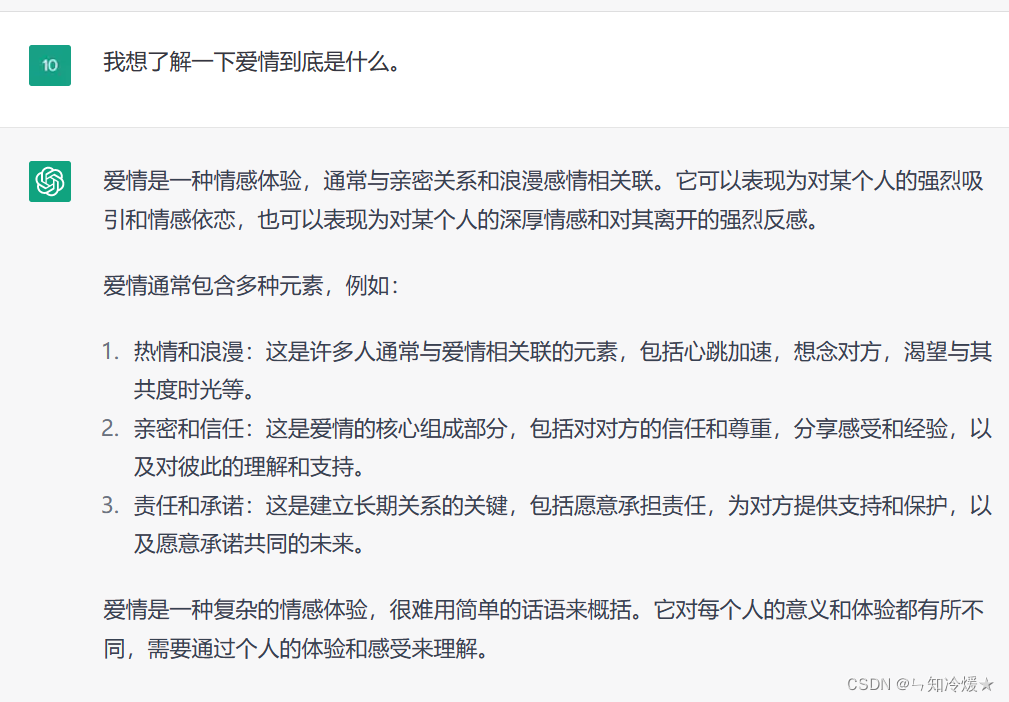
20. Summary
emmm, there are too many chatGPT chats for free today, the request request has been banned, so please request another day~
Category of website: technical article > Blog
Author:Believesinkinto
link:http://www.pythonblackhole.com/blog/article/25290/c6a3dd9fbcf1cc56a54f/
source:python black hole net
Please indicate the source for any form of reprinting. If any infringement is discovered, it will be held legally responsible.
name:
Comment content: (supports up to 255 characters)
no articles
